We come to Rapa Nui, a five hour flight west of Santiago Chile, on the first leg of Juliet’s belated surprise 35th birthday trip (she is now 36). This small remote Pacific island (14 miles long by 7 miles wide) is the youngest of the Polynesian Islands. There is uncertainty about when the island was first inhabited, and it is generally thought to have been between 400 and 1200 AD. The settlers, seafarers expanding eastward in the Pacific, named the island Rapa Nui, meaning “the navel of the world.”
There were several distinct periods on the island. One of them was distinguished by the building of rectangular stone platforms called ahu where important people were buried. Statues called moai were carved mainly of volcanic stone in the quarry of Rano Raraku, to commemorate those who had died. The statues are immense, averaging 13 feet in height and weighing 14 tons (although many are considerably taller and heavier). There were more than 1000 carved over the course of a few hundred years with many moved to various places on the island (how this was accomplished given their size, is unimaginable!) and some remaining in the quarry with much of their length buried underground.
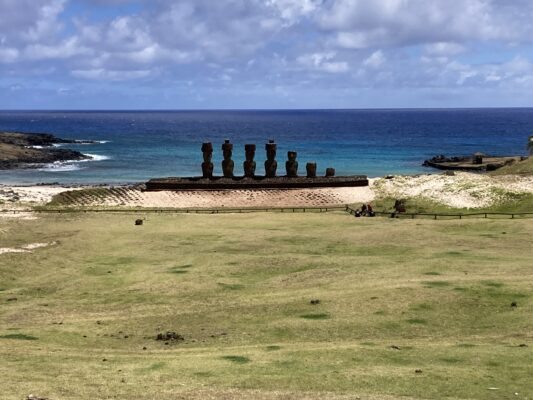
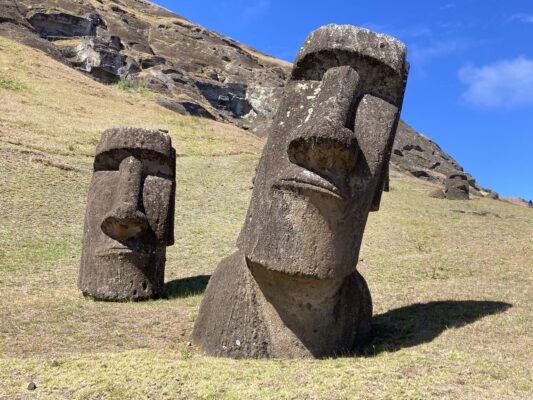
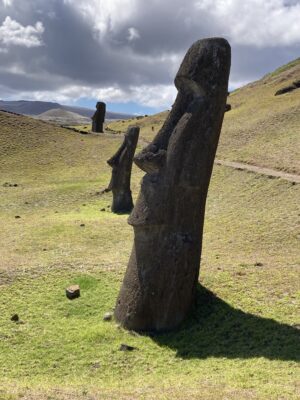
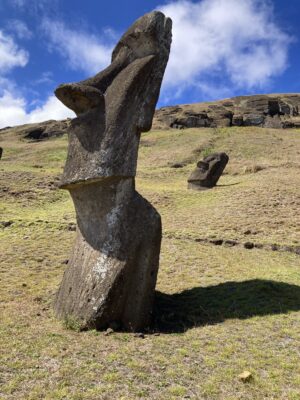
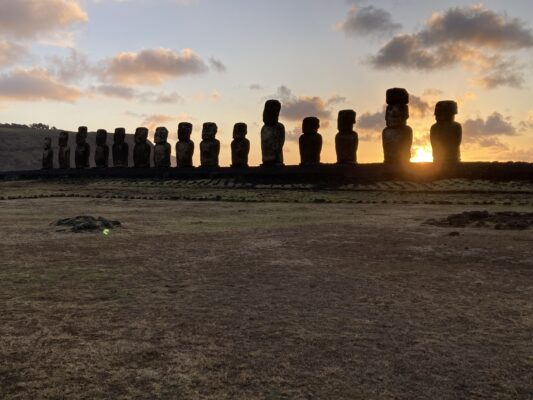
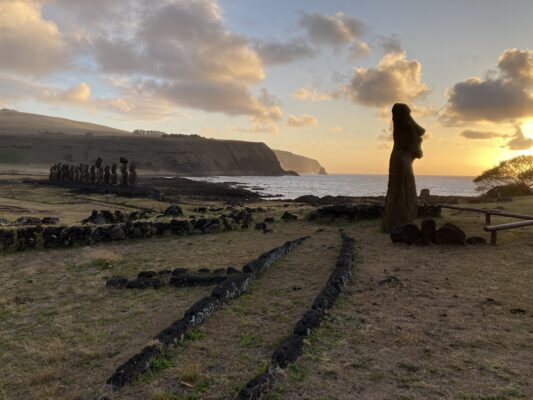
A subsequent period was characterized by the Birdman competition, a kind of triathlon that involved representatives from each of twelve tribes swimming out to a small islet in the Pacific. The first competitor to obtain an egg from the nest of a manutara bird would become the chieftain. This competition continued for a few hundred years.
In 1722, a Dutch explorer arrived on Easter Sunday, and named the island Easter. The indigenous people continued to call it Rapa Nui, as they do today. There was no written history before this date. The population grew until the middle of the 19th century when 1500 islanders were taken as slaves to work on other islands and in South America. Most died and when several of them returned, they brought with them smallpox which decimated the population leaving only 111 people on the island. In 1866, a Catholic mission was established and the indigenous people abandoned many of their practices, including the Birdman competition, and converted to Catholicism.
Rapa Nui became part of Chile in 1888. In 1903, a British company established itself on the island and ghettoized the indigenous people of Rapa Nui in the town of Hanga Roa until this company left in 1953, and they were freed. Today, there are about 3,000 Rapa Nuians with a rich culture.
In the late 18th and early 19th centuries, there was warfare between the various Rapa Nui tribes and many of the standing moai were knocked over and broken. Starting in the late 1950’s, archeologists from all over the world began studying the statues, carbon-dating them as well as the bones buried beneath them, and then repairing and uprighting them. They are awe-inspiring to behold.
We are privileged to visit this vibrant and beautiful island, and to experience the warmth of its people.
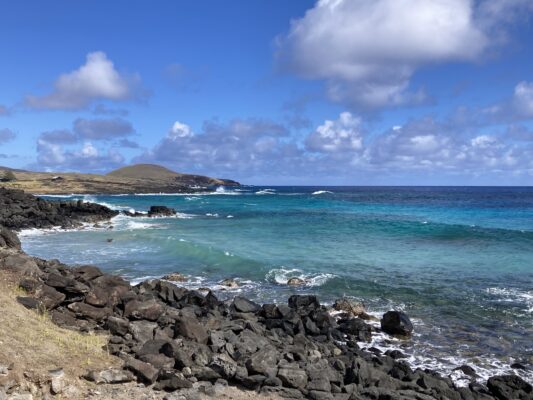
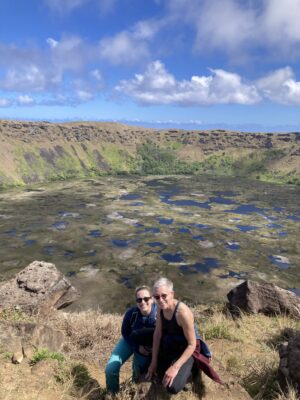
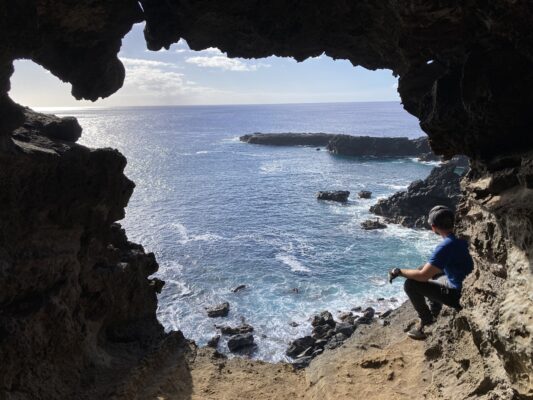

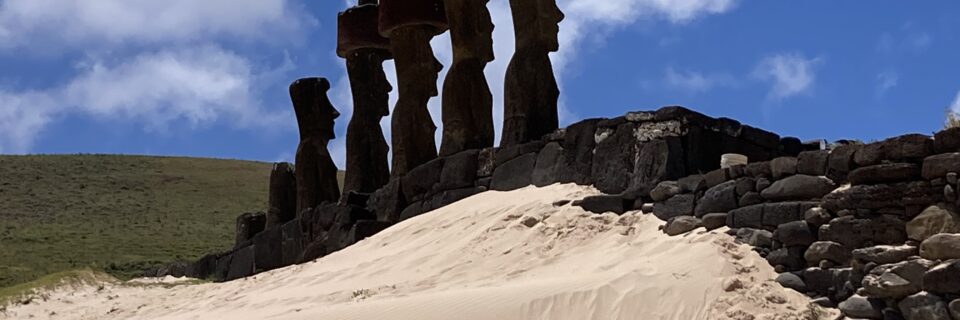
6 Comments
Great story Adele.
I absolutely love those pictures! So glad that your travels continue.
Wow!!! Such a special place. As always, thanks for sharing the history
I definitely learned a lot.
Such an interesting (and sad) history, like so many places in the world. Glad there is a community thriving now. Wonderful photos!
Magnificent. Photographs to document this epic trip. Xo
What a stunning place to visit indeed… Looks amazing!
Happy birthday Juliet!
Greetings from Sarajevo to both of you!